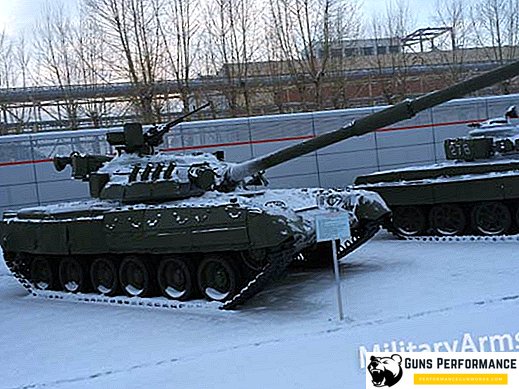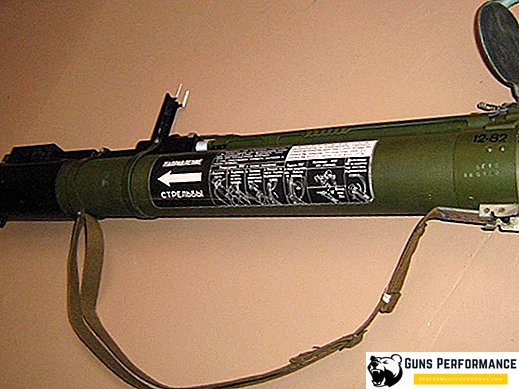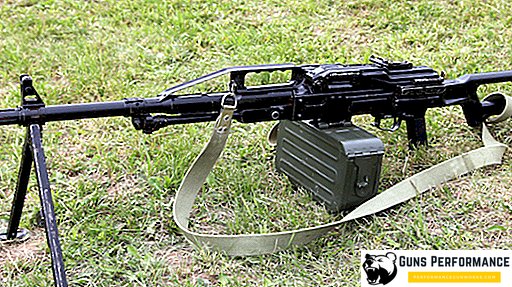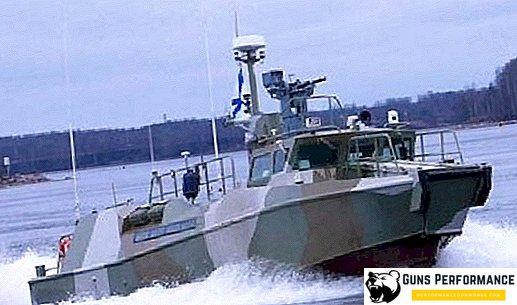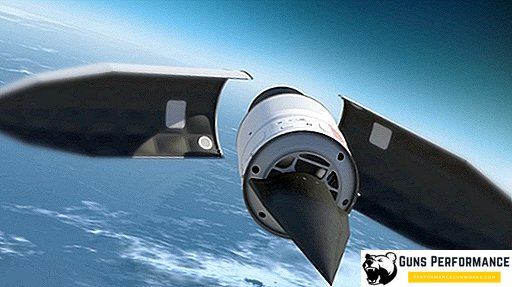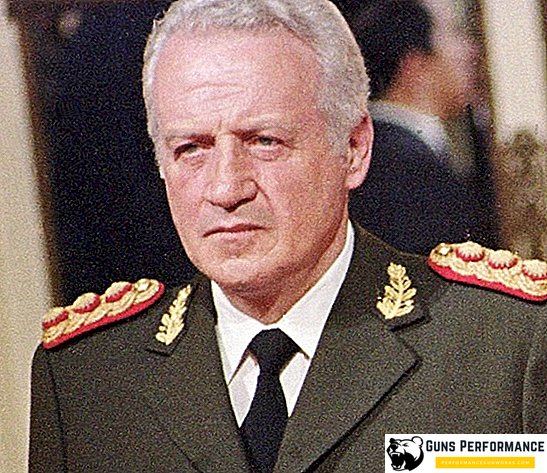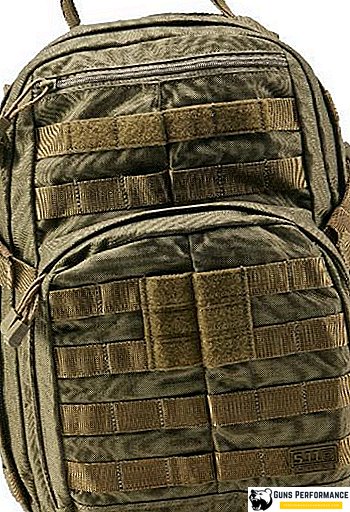The second half of the twentieth century can be called the era of strategic bombers. These huge machines, armed with the most deadly weapons, which only came up with a man, patrolled on transcendental heights, symbolizing the inevitability of a retaliatory strike. They provided guaranteed mutual destruction in the event of a nuclear conflict.
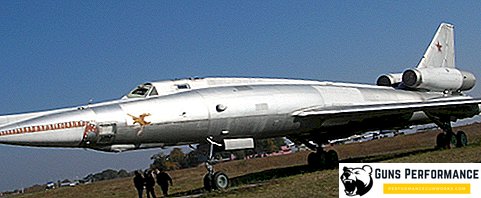
After the Soviet Union received a nuclear weapon, the question arose of how to deliver it to the territory of a potential enemy. We went in two ways: the development of intercontinental ballistic missiles and strategic bomber planes, which were armed with nuclear bombs or cruise missiles, began.
Western countries, especially the United States, significantly exceeded the Soviet Union in this direction. In 1949, the B-36 was built in America - the first aircraft that can be called a strategic bomber. In the same year, the USSR began mass production of the Tu-4, an exact replica of the American B-29 aircraft. But it was rather a long-range bomber, for a "strategist" this car is clearly weak. All of the above machines were turboprop, but a new era in bomber aviation soon begins, and the “strategists” overcome the speed of sound.

At that time there were still no anti-aircraft missiles that could reach high-speed aircraft at high altitudes, so an increase in the speed of the vehicles seriously increased their fighting qualities. However, the flight at supersonic speeds set before the designers a number of complex technical problems.
In the US, the B-58 and A-5 were developed, and the Soviet Union responded with the creation of the M-50 and Tu-22. These cars can be called the masterpieces of engineering thought; they collected all the technical achievements of their time.
Tu-22 bomber became a landmark machine for Soviet military aviation. This aircraft is a real long-liver: it made its first flight in 1958, and its operation ended in Russia in 1994. The Tu-22 went through several upgrades, its latest modifications were significantly different from the machine, which was made under the leadership of the genius Russian aircraft designer Andrei Nikolaevich Tupolev.

History of creation and application
The history of the Tu-22 is very interesting. In 1954, Tupolev offered the country's leadership two projects of new strategic jet bomber to replace the Tu-16. One of them was chosen. In 1958, the first test flights began. They were quite difficult: the plane did not give those characteristics (especially speed), which were specified in the terms of reference. During test flights, several catastrophes occurred, people died.
However, the mass production of this aircraft began. Almost immediately it became clear that the Tu-22 does not meet the requirements for speed and range. In addition, numerous defects and shortcomings were identified, several serious accidents occurred. Despite all the improvements, the car was able to reach a speed of only 1,450 km / h, although the technical task contained figures of 1500–1600 km / h. Significantly less than planned was the range in supersonic and subsonic modes. Breakdowns, failures and catastrophes continued.
In 1962, the Tu-22, not yet passed the test, begins to arrive in the part of long-range aviation. For the aircraft it was necessary to carry out the reconstruction of airfields, to extend the runways to 3000 meters. Mastering the car in the army went hard and was accompanied by numerous breakdowns and accidents. For the characteristic shape of the pilots nicknamed the new car "Shilo".
The aircraft had a rather high take-off and landing speed, while it was impossible to work them out on existing simulators. The Tu-22 was very difficult in piloting. Due to landing gear defects, strong vibrations often occurred during landing, which caused one of the pillars to fold. The cabin was also very uncomfortable; the pilots could not reach many toggle switches and control levers. At high speeds, due to poor engine layout, the machine became difficult to control. The pilots had a very bad review. The power plant had a lot of flaws. Due to the heating during flight, the skin was deformed.

The crew consisted of a commander, an onboard operator and a navigator.
The history of operation of this machine is quite dramatic. According to some reports, until 1975, more than 70 Tu-22s crashed into accidents of varying degrees of severity.
They were able to work the plane only by the beginning of the 70s, although later the state of emergency often happened with the Tu-22.
The car was produced at the Kazan Aviation Plant. A total of 311 aircraft were manufactured. The Tu-22 participated in several armed conflicts (Iran-Iraq war, several conflicts in Africa). This aircraft is actively exported. He took part in the Tu-22 in the Afghan war. Several Tu-22, converted into EW aircraft, interfered with Pakistani fighters.

On the basis of the Tu-22 were created reconnaissance aircraft, missile carrier, aircraft electronic warfare.
During the operation of the aircraft, there are cases when the crew refused to fly the Tu-22. This machine, of course, is the most emergency in the Soviet Air Force. Especially capricious was the Tu-22K (missile carrier). The commander of such an aircraft could only be a first class pilot.
The Tu-22 was quite difficult to maintain. It had to be prepared for flight for three and a half hours, and preliminary training took a whole working day. Service and repair of engines located at high altitude, was very inconvenient.
However, the experience gained during its creation and operation, allowed to create a Tu-22M, which, despite a similar name, was already a completely different aircraft. In the Russian Air Force, the Tu-22 was still used at the beginning of the 90s, but gradually the cars were put on conservation or disposed of.
Tu-22 device
The Tu-22 is built according to the normal aerodynamic configuration with a mid-wing high sweep wing. The wing has a caisson design.
The fuselage is a semi-monocoque, divided into five compartments. In the nose is the radar, covered with a radio transparent cap. Further located cockpit with instruments and controls. The entrance to the cabin is through the lower hatches, through which the emergency evacuation of the crew takes place. The third compartment is a niche for the front landing gear, as well as fuel tanks and some types of equipment.
The fourth compartment is a bomb, and two fuel tanks are also located here. The fifth compartment is tail; tail assembly and engines are attached to it.

The tail plumage is single-chin. The engines are in two engine nacelles. The power plant consists of two engines TRD RD-7M, on later machines, they were replaced by more reliable RD-7M2 with higher technical characteristics.
The chassis is three-axle, consists of a front pillar with two brake wheels and two main pillars, each of which has four brake wheels. There is also tail support. The Tu-22 is equipped with a braking parachute, the container of which is located in the tail section of the aircraft.
The Tu-22 has three independent hydraulic systems, one of which is emergency.
There is air conditioning cockpit, heating the bomb compartment and sealing of the access hatches. The rescue system is equipped with ejection seats, which are dropped down and equipped with life support systems and emergency reserves. When landing in the cockpit, the seats are lowered, and then, together with the pilots, they are raised up by a special mechanism. The minimum height at which the crew could eject was 350 meters.

The Tu-22 aircraft was equipped with a very advanced complex of electronic equipment for its time.
Combat load - up to 9000 kilograms. Both missiles and bombs can be installed in the bomb bay. To protect the rear hemisphere on the plane there is a gun installation DK-20 with a gun R-23 (262P), with remote control.
The Tu-22K could carry one X-22 “Storm” cruise missile or 13 free-fall bombs.
Specifications
| TTH Tu-22 | ||
| Tu-22K Blinder-B | Tu-22R (D) Blinder-C | |
| Specifications | ||
| Crew | 3 (commander, navigator, operator) | |
| Lengthm | 42,6 | |
| Wingspanm | 23,646 | |
| Heightm | 10,04 | |
| Wing area, m² | 151,25 | |
| Wing extension ratio | 3,7 | |
| Wing constriction coefficient | 3,68 | |
| Normal take-off weightkg | 92 000 | 85 000 |
| Maximum take-off weightkg | - | 91 000 |
| Normal landing weightkg | 56 500/60 000 without / with X-22 | 55 400 |
| Maximum landing weightkg | 65 000 | 65 000 |
| Mass of fuelkg | 42 900 | 48 500 |
| Fuel tank capacityl | 58530 (maximum) | |
| Power point | 2 × TRDF RD-7M2 | 2 × TRDF VD-7M |
| Flight performance | ||
| Max speedkm / h | 1610 / 1550 without / with X-22 | 1410 |
| Cruising speedkm / h | 950-1000 / 1200-1300 subsonic / supersonic | |
| Practical rangekm (at subsonic speed at supersonic speed with refueling) | 4400 1560 6150 | 5650 2400 7150 |
| Combat radiuskm | 2500-2700 | - |
| Practical ceilingm | 13 300 | 13 500 |
| Wing load, kg / m² (With a normal take-off mass) | 608 | 562 |
| Thrust | 0,3585 | 0,352 |
| Maximum operating overload | +2 g | |
| Armament | ||
| Combat loadkg | 3000/9000 | |
| Air-to-surface missile | 1 × X-22 | not |
| Aerial bombs | 1 × nuclear 7U-31 or 246N, various types of free-falling bombs | |
| Defensive armament | 1 × 23 mm gun 261P installation DK-20, 500 patr. | |



